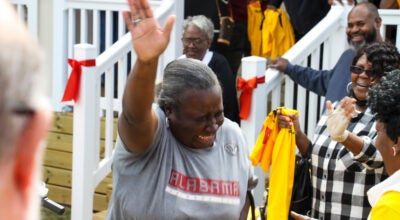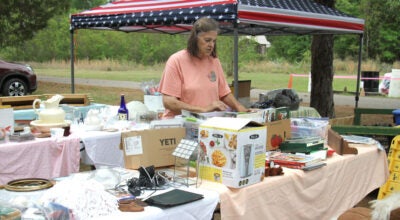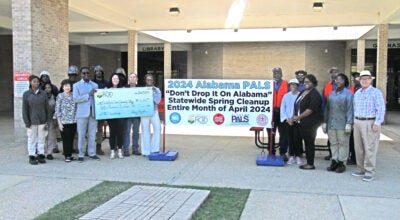SCS Superintendent talks strategic plan, future
Published 9:07 pm Friday, June 22, 2018
Selma City School (SCS) System Superintendent Dr. Avis Williams led a public hearing about the upcoming five-year strategic plan for the school system on Thursday.
Williams has talked about the plan before, and on Thursday night, she talked about how the plan would actually be implemented.
Williams talked about the need to have a plan to actually implement the strategies otherwise, little to no results will come from plans without direction.
Williams said that the framework provides a clear set of focus areas for Selma City Schools, a clear and measurable goal per area of focus, a listing of recommended strategies for implementation and a clear assignment of owners to ensure both oversight and execution of the goals set in place.
“At the center of our Framework for Excellence lies the ultimate goal of increased student achievement as measured within both college and career readiness, as well as students’ character and social development,” according to the plan documents.
The goal of the first are of focus, teaching and learning has a goal of ensuring all students are prepared for grade level success, college and career readiness through high-quality teaching and focused experiences for intellectual and social development.
The plan’s implementation for this goal includes developing annual performance benchmarks to promote systematic achievement growth and success for all students; ensure equitable access to rigorous standards-based instruction and strategic teaching and provide targeted and personalized professional development for instructional staff.
One of the implementations to ensure equitable access to instruction and strategic teaching is the establishment of a Science, Technology, Engineering, Art and Math (STEAM) Academy at R.B. Hudson Middle School.
Williams said that while changes are already happening at the middle school, the STEAM Academy would officially open in the 2019 school year.
Williams said that R.B. Hudson would go to a 1:1 ratio in equipment for the STEAM lab as well.
“We will need an infrastructure to support that,” said Williams.
In the culture, climate and community area, the goal is to enhance the supports and opportunities for engagement in schools for all stakeholders.
According to the plan, the goal will be achieved by ensuring schools are physically and emotionally safe from perceived and actual threats, and develop positive relationships with stakeholders to promote diversity and inclusion as well as involvement and participation across the Selma City School district.
One of the implementations to ensuring schools are physically and emotionally safe from perceived and actual threats includes fighting what is called the School to Prison Pipeline.
The American Civil Liberties Union (ACLU) defines the School to Prison Pipeline as a “disturbing national trend wherein children are funneled out of public schools, and into the juvenile and criminal justice system.”
ACLU claims that the children in this pipeline have “Learning disabilities or histories of poverty, abuse or neglect that would benefit from additional educational and counseling services. Instead, they are isolated, punished and pushed out.”
“We need to disrupt this,” said Williams. “Our students deserve better, and it is a shame that too many of our young people to almost feel destined for that or to be made to feel that way. We don’t want any young people to feel that way. The way we fight that is fixing our learning environment and the other part of that is strengthening our relationships.”
Williams said ways to fighting this including mirroring how other school districts deal with this problem.
In the leadership, management and governance area, the goal is to strategically and deficiently allocate human and fiscal resources to ensure long-term viability within the district.
This will be achieved by actively recruiting, hiring and retaining a qualified and diverse workforce, ensuring every school and every department have highly effective instructional leaders, providing ongoing, job-embedded responsive professional learning for all staff to improve overall performance and continuing to maintain a minimum of one-months reserve in the general fund.
In the final goal, facilities and technology, the goal is to streamline the district’s geographic footprint to ensure a more equitable distribution of resources, more efficient operations, and to enhance the current technology infrastructure, equipment and devices available to schools.
The two ways Williams and the school system hope to achieve this is to analyze and review facilities to support services for improved district outcomes and to provide technologies that operate efficiently, enrich programs and improve district outcomes.
One objective for this area is to systematically analyze and review facilities to support services for improved district outcomes.
One of the implementations for this goal is to develop a plan to systematically consolidate, renovate, rezone and maintain schools within the district for an equitable division of resources.
“What that means is that we are going to have to close some schools,” said Williams. “We are going to have to really look at our facilities usage, what makes sense from a fiscal standpoint and even just from a management standpoint and a personnel standpoint.”
Williams did not specify any schools that could be closed in the future.





